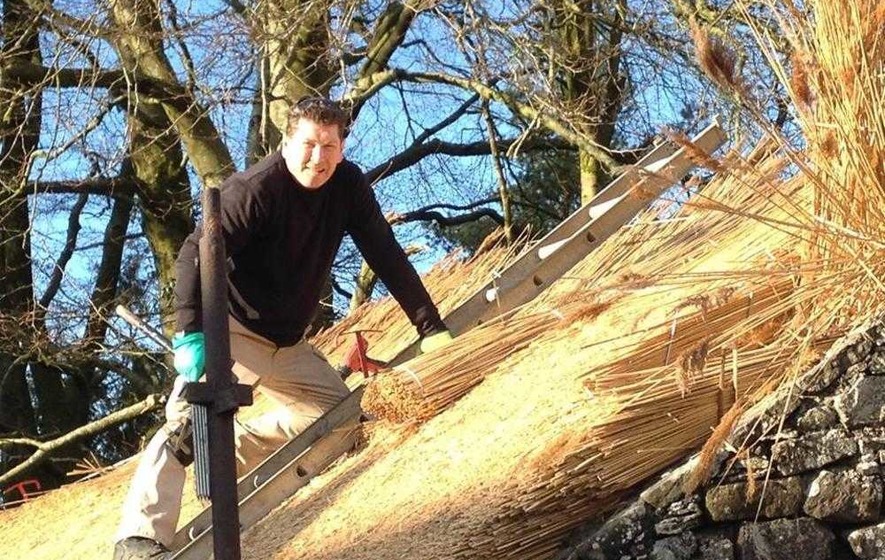Omagh Man on A Mission To Preserve Thatching
A traditional thatcher from Omagh who ‘downed tools’ 13 years ago in protest at a government grants scheme has stepped up his ladder again to thatch the roof of a historic cottage in Co Fermanagh.
Master thatcher Mark Taggart went ‘on strike’ in 2002 due to “official failure” to regulate the depth and quality of thatching on historical buildings when issuing grants – which met between 75 and 90 per cent of total costs – and permitting “modern thatchers” to rip out ancient Irish bog oak ‘scraith’ roofs.
But since grants are no longer easily available, he is back at work, thatching Heather Cottage near Enniskillen – a building he first worked on 20 years ago.
He took the unusual stance in protest at the modern-type of thatching being carried out on historical buildings in the north which he claimed led to “sub standard thatching” using modern rafter and batten thatch roofs with “no Irish identity”.
In such cases, he said the thatch could survive intact for an average of seven years instead of between 30 and 60 years when done using traditional methods.
The lack of industry standard, specifically relating to the removal of ‘scraiths’ – unique to Ireland and said to act as a primitive fire barrier – and absence of any sort of specification regarding the depth of thatch used led the father-of-three to decisively abandon his work in the north.
Instead, he used his time-honoured skills in England and the Republic, also periodically working in the construction sector as a building engineer.
Now, however, Mr Taggart believes there may be some movement on preserving authentic traditional practices, using the on ‘scolloping on’ method when attaching quality water reeds (usually brought in from France or Turkey due to their low nitrate content).
Following a recent meeting with the Northern Ireland Environment Agency (NIEA) he is hopeful a minimum depth will be required on all thatching projects carried out in the north in the future.
“The Republic has taken the lead recently by advising a minimum depth of 10 inches of thatch and this is definitely a move in the right direction,” he said.
“I am hopeful the authorities in the north will also take action as we need to protect the ‘scraith’ and its bog oak timbers by introducing a specification for the thatch that protects it.”
The ancient ‘scraith’ is believed to stretch back to the time of the Celts and consists of a grass sod with the earth or clay facing upwards towards the thatch, thus protecting timbers from collapse in the event of a fire.
“The Irish ‘scraith’ is only found under thatched roofs in Ireland and is a unique part of our Irish construction heritage, even mentioned by Seamus Heaney in the poem ‘Thatcher’,” Mr Taggart added. “It is vital we preserve them.”
He is currently organising a crowdfunding project to help with the cost of re-thatching an unlisted cottagle belonging to Castledawson woman Josie McMullen.
“Josie ran an open farm for schools and groups to visit and raised money for many charitable causes down through the years,” he said.
“She is intending to run the cottage as a tourist attraction and Ceilidh venue to complement the Seamus Heaney centre being build close by so I hope people will make a contribution and help us reach our £5,400 target.”
Source: irishnews.com




